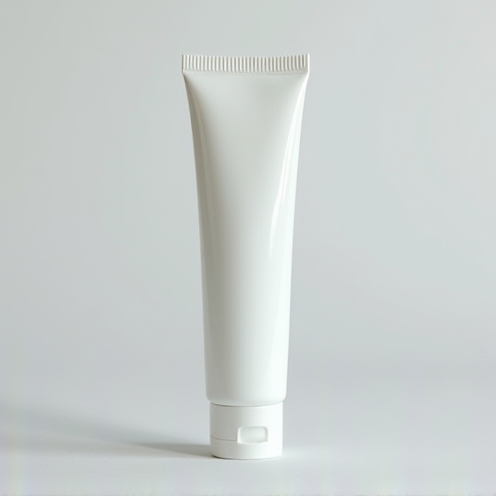Ketowyn 2% Cream
Product Info
| Prescription required | No |
| Marketer | Norwynn Healthcare |
| Active Ingredient | Ketoconazole (2%) |
| Storage | Store below 30°C |
| Chemical Class | Azole derivatives {Imidazoles} |
| Habit Forming | No |
| Therapeutic Class | DERMA |
| Action Class | Fungal ergosterol synthesis inhibitor |
| User Rating | 4.5 |
| User Reviews | 477 |
FAQ
















Ketowyn 2% Cream Reviews
Ketowyn 2% should be used in the dose and duration as prescribed by your doctor. This medicine should be used regularly to get the most benefit from it. Do not use more than you need – it will not clear your condition faster and may only increase the side effects. Skin infections will usually get better after 2 to 4 weeks. Do not use the cream for longer than your doctor has told you to and let him or her know if your condition does not improve after 2 to 4 weeks of treatment. You can help the cream work better by keeping the affected areas clean, making sure they are dry and washing your hands before and after treating the infection. If you have athlete’s foot, wash your socks or tights thoroughly and change your shoes daily if possible.
The most common side effects of using this cream include a burning sensation and irritation, dryness, peeling or blistering of the skin. Occasionally it can cause thinning of your hair. These are not usually serious, but you should call your doctor if you think you might have a severe allergic reaction. Signs of this include rash, swelling of the lips, throat or face, swallowing or breathing problems, feeling dizzy or faint and nausea. Get emergency help if this happens. Avoid direct contact of the cream or ointment with your eyes. In case of direct contact, wash your eyes with water and seek immediate medical attention.
it is not likely that other medicines you take by mouth or injection will affect the way this medicine works, but talk to your doctor before using it if you have recently used another cream that contains a steroid or had an allergic reaction to another antifungal medicine. This cream should only be used if it is clearly needed if you are pregnant or breastfeeding. Ask your doctor if it is safe.
How Ketowyn 2% Cream Works
How to Use Ketowyn 2% Cream
Benefits of Ketowyn 2% Cream
- In Fungal skin infections: Ketowyn 2% is an antifungal medicine. It is used to treat skin infections caused by fungi. These include athlete’s foot, ringworm, vaginal thrush, and sweat rash. It works by killing and stopping the growth of fungi, thereby clearing the infection and relieving the symptoms. You should use this medicine for as long as it is prescribed, even if your symptoms disappear, otherwise they may come back. Depending on the type of infection you are treating, this may be several weeks. Even after your skin is completely cured, you may have to apply the cream occasionally to prevent the symptoms from returning.
Uses of Ketowyn 2% Cream
- Fungal skin infections
Ketowyn 2% Cream Side Effects

Safety Tips
Quick Tips
- Keep your feet clean and dry, particularly between the toes.
- Use a separate clean towel for the feet and wear clean cotton socks.
- Finish the full course of treatment even if you feel better.
- Never share your socks, shoes, and towel with others.
- Few healthy tips for Athlete's Foot:Keep your feet clean and dry, particularly between the toes.Cut your nails short and prefer open-toe shoes for everyday use.Use a separate clean towel for the feet and wear clean cotton socks. Never share your socks, shoes, and towel with others.
- Avoid getting it in the eyes, nose, or mouth. If accidental exposure occurs, rinse immediately with plenty of water.
- Inform your doctor if you are pregnant, planning pregnancy or breastfeeding.
- Cut your nails short and prefer open-toe shoes for everyday use.
- Inform your doctor if the infection has not cleared up after 4 weeks of treatment.
- Ketowyn 2% helps treat skin infections caused by many different types of fungi.
References
- Ketoconazole. High Wycombe, Bucks: Janssen-Cilag Ltd.; 1998 [revised 8 Feb. 2019].
- Chrousos GP. Adrenocorticosteroids & Adrenocortical Antagonists. In: Katzung BG, Masters SB, Trevor AJ, editors. Basic and Clinical Pharmacology. 11th ed. New Delhi, India: Tata McGraw Hill Education Private Limited; 2009. p. 693.
- Ketoconazole cream [Prescribing Information]. Hawthorne, NY: Taro Pharmaceuticals Inc.; 2014.
- Bennett JE. Antifungal Agents. In: Brunton LL, Chabner BA, Knollmann BC, editors. Goodman & Gilman’s: The Pharmacological Basis of Therapeutics. New York, New York: McGraw-Hill Medical; 2011. p. 1576.
- Schimmer BP, Funder JW. ACTH, Adrenal Steroids, and Pharmacology of the Adrenal Cortex. In: Brunton LL, Chabner BA, Knollmann BC, editors. Goodman & Gilman’s: The Pharmacological Basis of Therapeutics. 12th ed. New York, New York: McGraw-Hill Medical; 2011. p. 1233.
- Briggs GG, Freeman RK, editors. A Reference Guide to Fetal and Neonatal Risk: Drugs in Pregnancy and Lactation. 10th ed. Philadelphia, PA: Wolters Kluwer Health; 2015. pp. 758-59.
